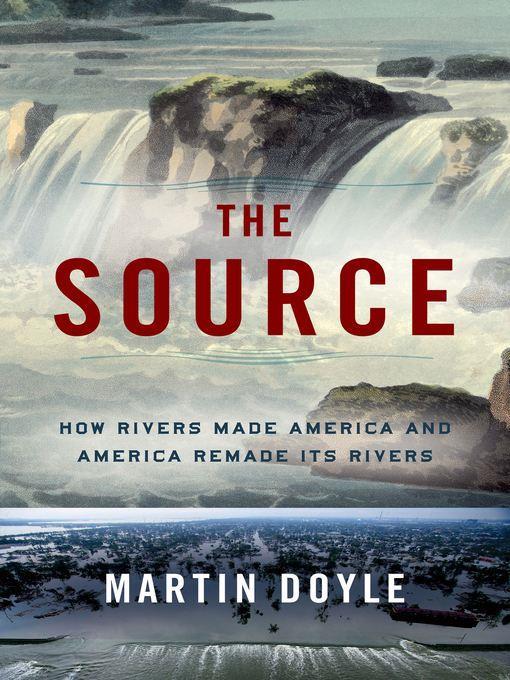
The Source
How Rivers Made America and America Remade Its Rivers
کتاب های مرتبط
- اطلاعات
- نقد و بررسی
- دیدگاه کاربران
نقد و بررسی

November 15, 2017
Doyle (director, Water Policy Program, Nicolas Inst. for Environmental Policy Solutions, Duke Univ.) provides readers with an environmental history of the United States using the country's several rivers as his guide. Many connections between the earliest years of this nation and her rivers display how these waterways shaped politics, society, and the economy. Chapter titles such as "Navigating the Republic," "The Rise of the Levees," and "Water Wars" nicely organize the text. Important events, such as the creation of the Army Corps of Engineers; how city governments took over sewers and waste management; the building of the Hoover Dam, the Tennessee Valley Authority, and the devastating failure of the New Orleans' levees during Hurricane Katrina are tracked and examined. Doyle also interviews people who live their lives around water, including a tugboat captain and a rancher trying to obtain water rights. Images and diagrams of how some of these waterways were rerouted help readers envision the drastic changes. VERDICT Recommended for fans of U.S. environmental history, especially as it relates to rivers.--Jason L. Steagall, Gateway Technical Coll. Lib., Elkhorn, WI
Copyright 2017 Library Journal, LLC Used with permission.

Starred review from December 4, 2017
Doyle, professor of river science and policy at Duke University, pays tribute to America’s waterways in this worthy history, noting their importance to the country’s development and its basic identity. Covering such topics as trade, politics, and environmentalism, Doyle looks at how the Erie Canal, for example, helped facilitate trade and commerce between the North Atlantic coast and the “burgeoning West.” The “once obscure towns” of Syracuse, Utica, Rochester, and Buffalo developed as “hubs of nineteenth-century manufacturing and industrialization,” while New York City became an entry point for European “immigrants heading toward America’s interior.” Doyle then turns his attention to the Mississippi River and the establishment of levee systems and flood controls along it. His discussions with Mississippi River towboat pilot Donnie Randleman and towboat captain Robert “Howdy” Duty add color and character to the narrative. Doyle rounds out this volume by examining ways in which Americans have altered rivers over the years. Gross and negligent pollution of industrial waterways—one result of which was that the Cuyahoga River in Ohio infamously burned in 1969—would eventually give rise to movements for river conservation and restoration. Doyle tackles the shifts in how America has viewed and used its extensive waterways, producing a comprehensive and enjoyable account. Illus.

December 1, 2017
A vigorous look at American history through the nation's waterways.In at least some measure, writes Doyle (River Science and Policy/Duke Univ.), federalism was born of an effort to regulate the use of waterways that, in the eastern portion of the country, often lay entirely within individual states: the James, for instance, in Virginia, and the Hudson in New York. In the 18th century, private river companies had formed with "modest ambitions: keeping their river cleared of logs, sandbars, and any other blockages." The newly formed federal government stepped in, placing rivers in the national domain; it's no accident, writes the author, that the U.S. Military Academy was sited alongside a river, since its graduates were trained to be river engineers above all else. Where states retained power, they sometimes governed for the eventuality of a flood, as with the levee districts along the Mississippi in the South. However, when Ronald Reagan's administration made moves to revert power to the states, "this meant putting the impetus back on local and state governments to spend their own money on projects," which was a nonstarter. Doyle links subsequent developments in taxation, environmental policy, energy, and resource management to the management of water, with all its many tangles; as he notes, for example, "fences dividing fields or lines dividing a map; both are intuitive. Dividing water is not so intuitive." Thus, the fight continues over such things as the allocation of the Colorado River or the ownership of the mouth of the Columbia. Doyle is not the first to look at history through the lens of water; Wallace Stegner and Donald Worster, among others, have written signally important books in the field. This book is a comparatively minor entry alongside them but still worthy of a place in any water-centered library.Waste, restoration, and efforts to use a scarce resource wisely: Doyle speaks well to issues that are as pressing today as in the first years of the republic.
COPYRIGHT(2017) Kirkus Reviews, ALL RIGHTS RESERVED.

























دیدگاه کاربران